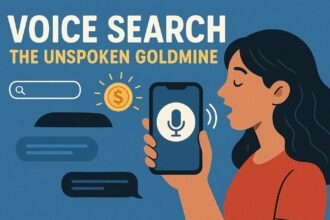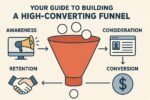How Smart Paid Ads Can Deliver 10x Results
Everyone in the digital marketing world is trying to get the best return on investment (ROI). A lot of businesses are happy with “good enough,” but what if you could do much better? You should expect to get 10 times what you spend on ads back. It’s not just a pipe dream; it’s the result of a well-thought-out, data-driven PPC plan.
This guide explains how to think about, plan, and run campaigns that go beyond clicks and impressions and make a lot of money. We’ll talk a lot about high-value industries like finance and insurance, where the right customer is worth a lot more than a random lead.
Phase I: Laying the Groundwork
The real work starts before you even open Google Ads or Meta Ads Manager. Before you start building the house, think of this stage as drawing the plans.
1. Figure out who your best customer is
Focusing on quality over quantity leads to big wins. Instead of trying to reach as many people as possible, focus on the ones who will make you the most money.
Make a Detailed ICP (Ideal Customer Profile):
- Age and gender aren’t enough. What is their job title? What is your income range? What are their main problems? What are their goals for the future?
Look into it deeply:
- Look for patterns using Google Analytics, LinkedIn insights, and surveys of your customers.
- Where do they spend their time on the internet? What kind of things do they like to read?
Map the Customer Journey:
- Do they look for answers on Google? Ask your friends? Do you read industry magazines? You can put your ads at the right time if you know where they are going.
2. Get High-Intent Keywords Right
Your keyword strategy decides if your budget helps your business grow or wastes money.
| Type of Keyword | Example | How It Works |
|---|---|---|
| “Investment” in general | Too broad | Too many competitors, and not enough return on investment |
| With a lot of intent | “Best retirement wealth advisor near me” for the long tail | More specific, less competitive, and more likely to convert |
| Negative | “free financial advice” | Gets rid of leads that aren’t good |
Pro tip: Use tools like SEMrush or Ahrefs to find out what keywords your competitors are using and what they aren’t using.
Phase II: Setting Up the Campaign
Now that you know who you’re trying to reach and what words to use, it’s time to turn that information into ads and landing pages that work.
1. Ad Copy That Works
Your ad has only a few seconds to connect. Make it worth it:
- Lead with Pain Points: “Tired of confusing tax rules?” is better than “Financial Services for All.”
- Emphasize Your Unique Value Proposition (UVP): Why should they pick you? Faster approvals, lower fees, and advice that is tailored to you?
- CTA That Gets People to Do Something: Change “Learn More” to “Book Your Free Consultation Today.”
2. Landing Pages That Work
If the page doesn’t work, a click doesn’t mean anything. Think of your landing page as the deal’s end.
- Match the Message: If your ad says it will help people retire, don’t send them to a generic homepage.
- Get rid of distractions: No extra menus or unrelated offers, just one clear goal.
- Add Social Proof: If you have testimonials, trust badges, or logos from big-name clients, they can help a hesitant lead make a decision.
3. Targeting and Bidding at a Higher Level
This is where campaigns go from “good” to “great.”
- Smart Bidding: Let AI optimize in real time by using Google’s Target ROAS or Maximize Conversion Value.
- Targeting the Right People: Use in-market audiences and custom intent to reach people who are already looking for your solution.
- Retargeting: Get people who left to come back. A gentle reminder ad often doubles the chances of conversion.
Phase III: Ongoing Improvement
You can’t just “set it and forget it” with a PPC campaign. It’s more like a living thing that changes all the time.
1. A/B Testing
Small changes can lead to big improvements. Try:
- Headlines, descriptions of ads, and calls to action.
- The colors of the buttons, the length of the forms, and the pictures on the landing page.
One variable at a time, and for a long enough time to get good data.
2. Don’t just look at clicks
Clicks are great, but they don’t pay the bills. Instead, measure:
- Conversion Value: The amount of money that each lead is worth in real life.
- Behavior After Conversion: How long does it take to close leads from Campaign A compared to Campaign B?
- Attribution Models: Learn how different touchpoints work together (display → search → conversion).
More than the 10x ROAS
Getting to 10x isn’t the end; it’s a way to grow that can be repeated.
- Small Wins = Big Returns: In industries with high lifetime value, even a 1% increase in conversion rate can mean six or seven figures.
- PPC ads are not “just ads”: They are part of a plan. It’s the sharp end of a spear that was made through research, targeting, and positioning.
- Data is your compass: Every campaign gives you information that should help not only your ads, but also your whole business plan.
The money isn’t the only thing that matters in the end. It’s what you learn about your audience, your message, and your market. That is what makes it possible to get a 10x return on investment over and over again.












